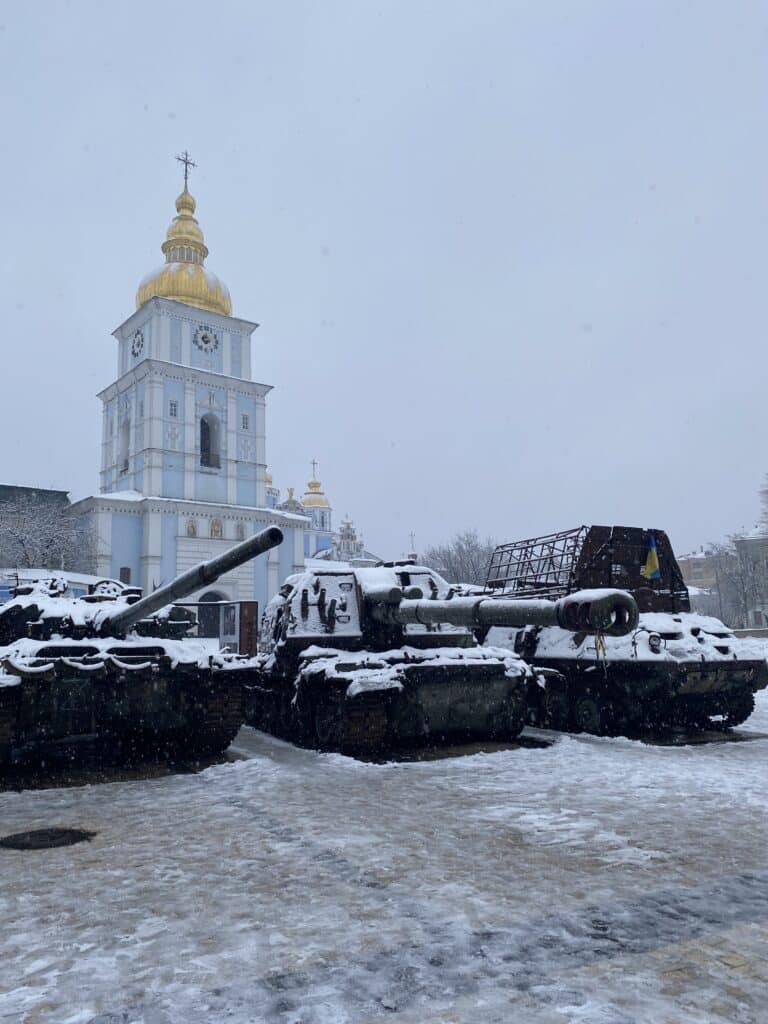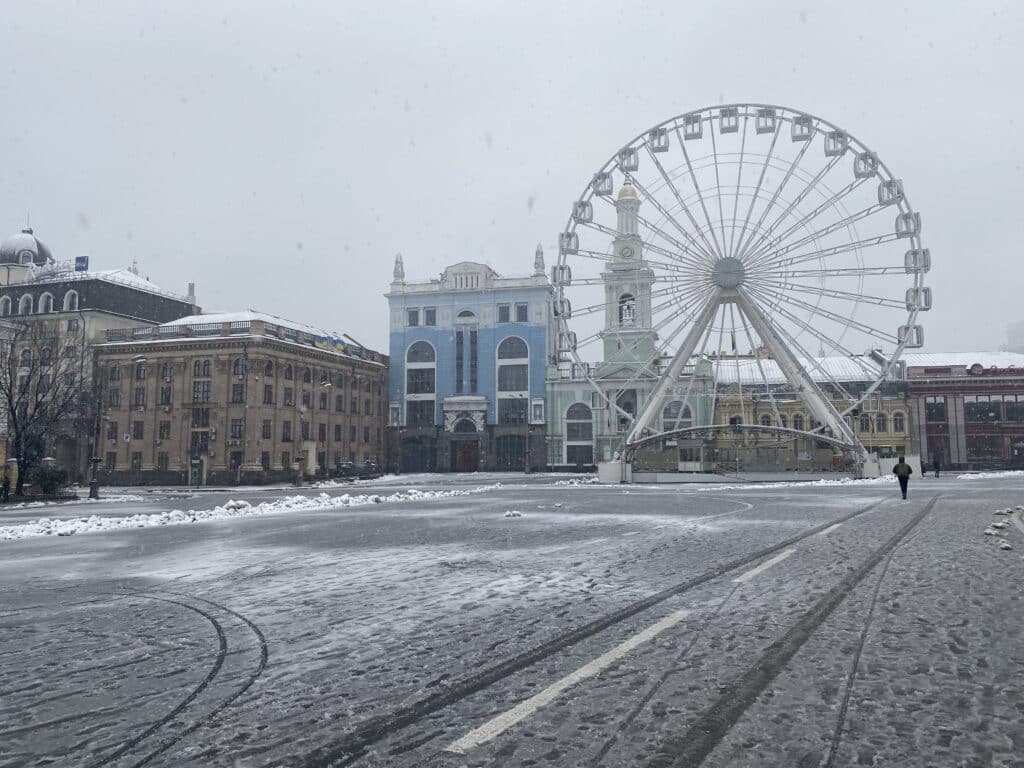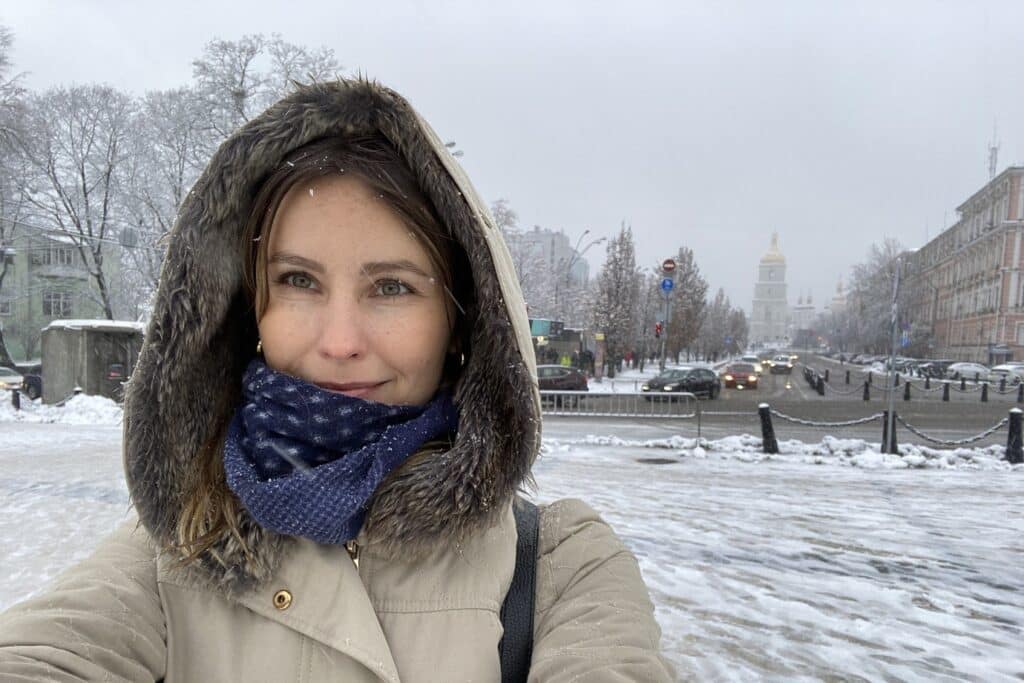When I visited Kyiv last November, it was striking how the city felt so familiar and full of life despite so much change.
As my sister and I walked to one of our favourite theatres in Kyiv to enjoy the Ukrainian classic “Kaidasheva Family,” the streets were dark – street lighting is now a a luxury. The theatre’s cloakroom was closed due to potential missile attacks, and the theatre was cold, so keeping a coat on felt like a good idea. As we laughed watching some of the comic moments in the play, I thought how amazing it was to be able to escape the reality of living in war, even if just for two hours, and enjoy such trivial moments that we so often take for granted.
Many speak of the remarkable resilience that Ukrainian people have demonstrated since the start of this conflict, which is indeed inspiring. But such an image, while being a testament to people’s stoicism, shouldn’t romanticize this war – the scale of harm it has already caused, all the destruction and pain for millions of Ukrainians should not be underestimated. Ukrainians keep on going in the midst and in spite of all this madness because they simply have no other choice.
At the start of the full-scale invasion, when I arrived in Ukraine to support the set-up of the humanitarian response, the country felt different.

Everyone was still running on adrenaline, still in a state of disbelief from the gravity of the unfolding disaster. My family was still trapped in Mariupol then, and I did not know if they would survive. Over the last year, adrenaline wore off and the gruesome outlook of this new reality started to sink in. It becomes particularly evident through millions of stories of people affected by this war. Many are lucky to have escaped death but have lost their homes or loved ones.
While some are now in safety outside the country, most have family or friends remaining in Ukraine, unable or unwilling to leave. Every moment there is an airstrike alert, and one can’t get through to their family inside Ukraine due to disrupted connection, feels like torture – a feeling well too familiar for me as well.
When I visited World Vision’s response in Romania, one Ukrainian woman told me about her son with a disability, who stayed behind to look after her elderly mother who couldn’t leave due to poor health. They live close to the frontlines – so there’s frequent shelling. She can’t hold back tears when she speaks about her fear for them. Despite and perhaps because of what she’s been through, she finds strength to help other Ukrainians whom, like her, the war has displaced to Romania. There are countless stories like hers.
It is also striking to hear children speaking about the war as if it was a totally normal occurrence. A little girl from Odesa who now lives in Romania tells me how she can’t go home since bombs are falling on her city. She is only four. Since February 2022 nearly 5 million Ukrainian children were forced to flee home. Many of those who remain inside Ukraine aren’t able to experience simple joys of childhood, which again, we often take for granted.

Since the attacks on the energy infrastructure intensified in autumn, Ukrainian cities have plunged into darkness due to regular power cuts. I had just made it to my family apartment in Kyiv from the train station as the loud siren wailed to warn about the incoming airstrike. That day saw one of the worst attacks on Ukraine’s power grid and we were left without power and running water for three days.
Yet, Kyiv is hundreds of kilometres away from the frontlines. I can’t even start to imagine what life is like for those living in cities and villages close to active fighting, where some are shelled day and night. Every day of my stay in Kyiv was marred by uncertainty – will we have power today? Do we need to stock up on more water? My colleagues told me to pack a grab bag of essentials in case of being caught by an air raid, or a power cut in the metro, or trapped in an elevator. Once again, Ukrainians adjusted quickly to a new reality.
Like in any crisis, people visiting Ukraine these days are struck by a combination of the opposites – the exhaustion and resilience, fear and heroism, deep pain and a strong desire to live.
The war has has claimed thousands of lives. It has destroyed over 30,000 residential buildings, more than 2,600 schools and over 1,200 medical institutions. Almost daily we hear about the death of civilians and Ukrainians of all professions who joined the army, including famous athletes, scientists, actors and ballet dancers. They could have lived long lives and made Ukraine famous through achievements in sport, a discovery, or beautiful performances. Instead, they died in combat, defending the future of their country, because they felt they had no other choice.
As the conflict has crossed its one-year mark, Ukrainian resilience shows no signs of declining, no matter the cost. However, the damage and scars left by this conflict for the millions of Ukrainians will take generations to heal.

